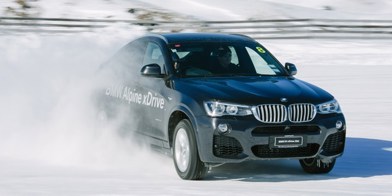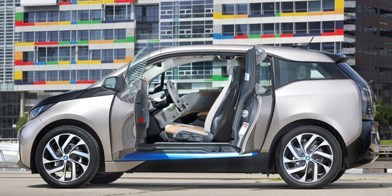Well, almost every Type R...
Last weekend Driven wrangled together all but one of the Honda Civic Type R bloodline for a rather neat group photoshoot. And, although the new FK8-generation machine was the key point of focus, I couldn't help but inquire about taking each other generation of Civic for a brief spin — back to back and in reverse order.
So, which is best? Here's the list.
6th: FN2 (2006–’10, third generation)
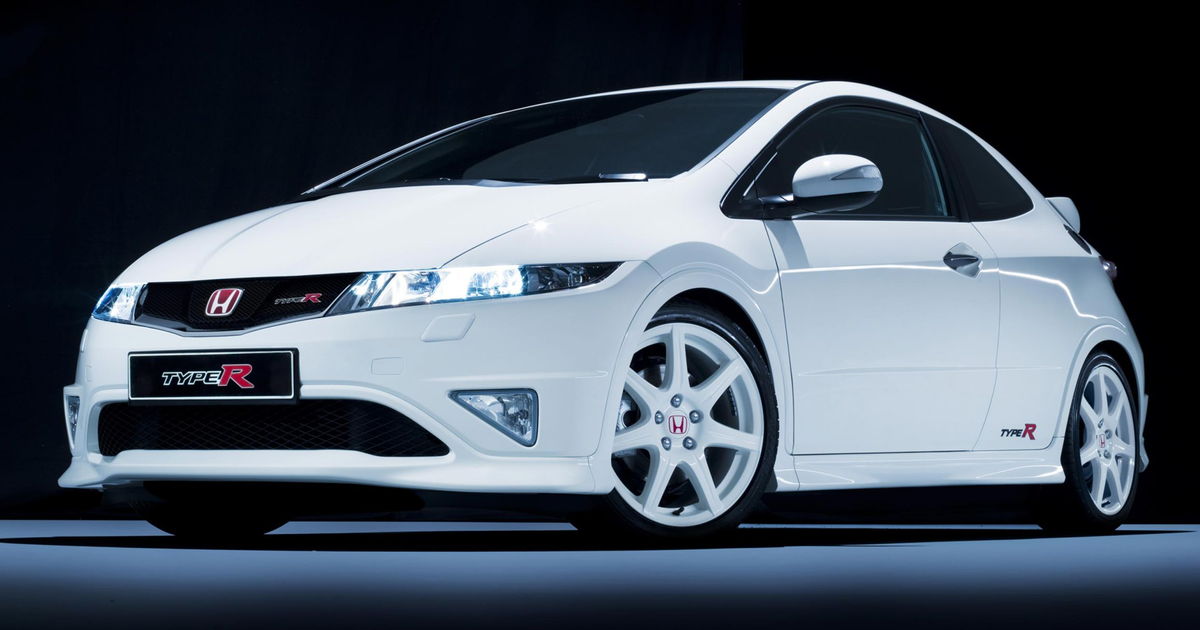
Photo / Honda
Admittedly, we weren't able to wrangle one of these for the shoot (full disclosure; Honda NZ did offer us one in red, but at the time there weren't any plans to drive them all for a future story. Instead, we let our crippling OCD decide against it coming along next to all these Championship White variants).
It thus seems a bit unfair to include it on this list at all, but my gut tells me this is where it would likely wind up regardless.
The FN2 was part of an interesting strategy for Honda to release two completely different Civic Type Rs on alternative sides of the world. Japan got the FD2 — based on their four-door sedan — and Europe got this FN2. It was based on a platform that ended up becoming the next Honda Jazz supermini.
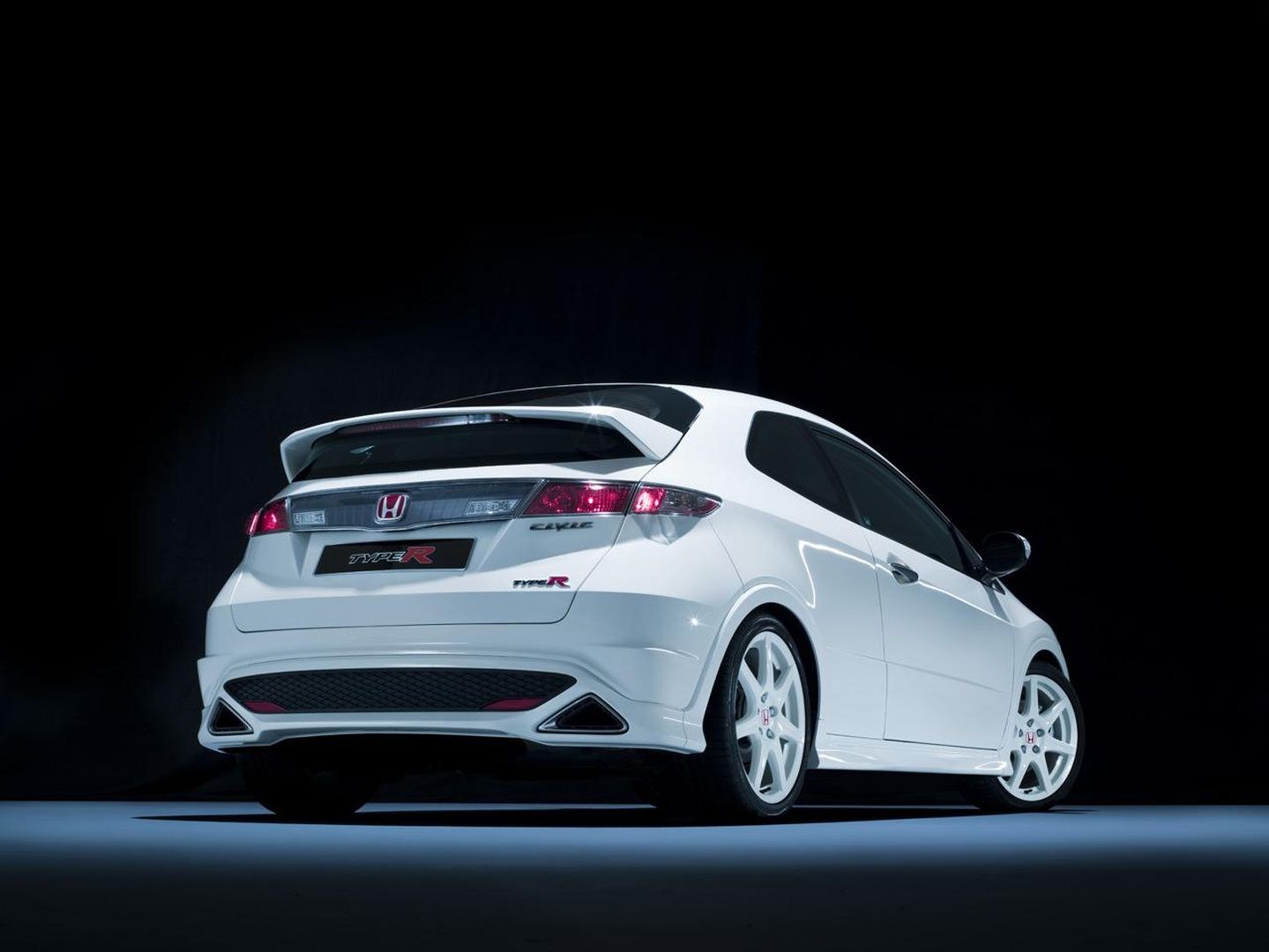
Photo / Honda
It retained a lot of the same wildly successful ingredients from the car it replaced; the EP3. This included a K20 engine, although it had been tinkered with — hence an alternate K20KZ4 code name.
However, critics weren't kind to the FN2 ... Top Gear's Jeremy Clarkson labelled it “absolutely hopeless”, after likening its ride-quality to being stabbed, and after pointing out its tendency to understeer, as well as the meager performance improvements it had made over the model it replaced; the EP3. And those views are typically accepted by even hardened Honda fans.
It's shame, because the FN2 is one of the very best looking cars Honda have made on this side of the century. Even today, the sci-fi design remains vibrant and fresh.
5th: EP3 (2001–’06, second generation)
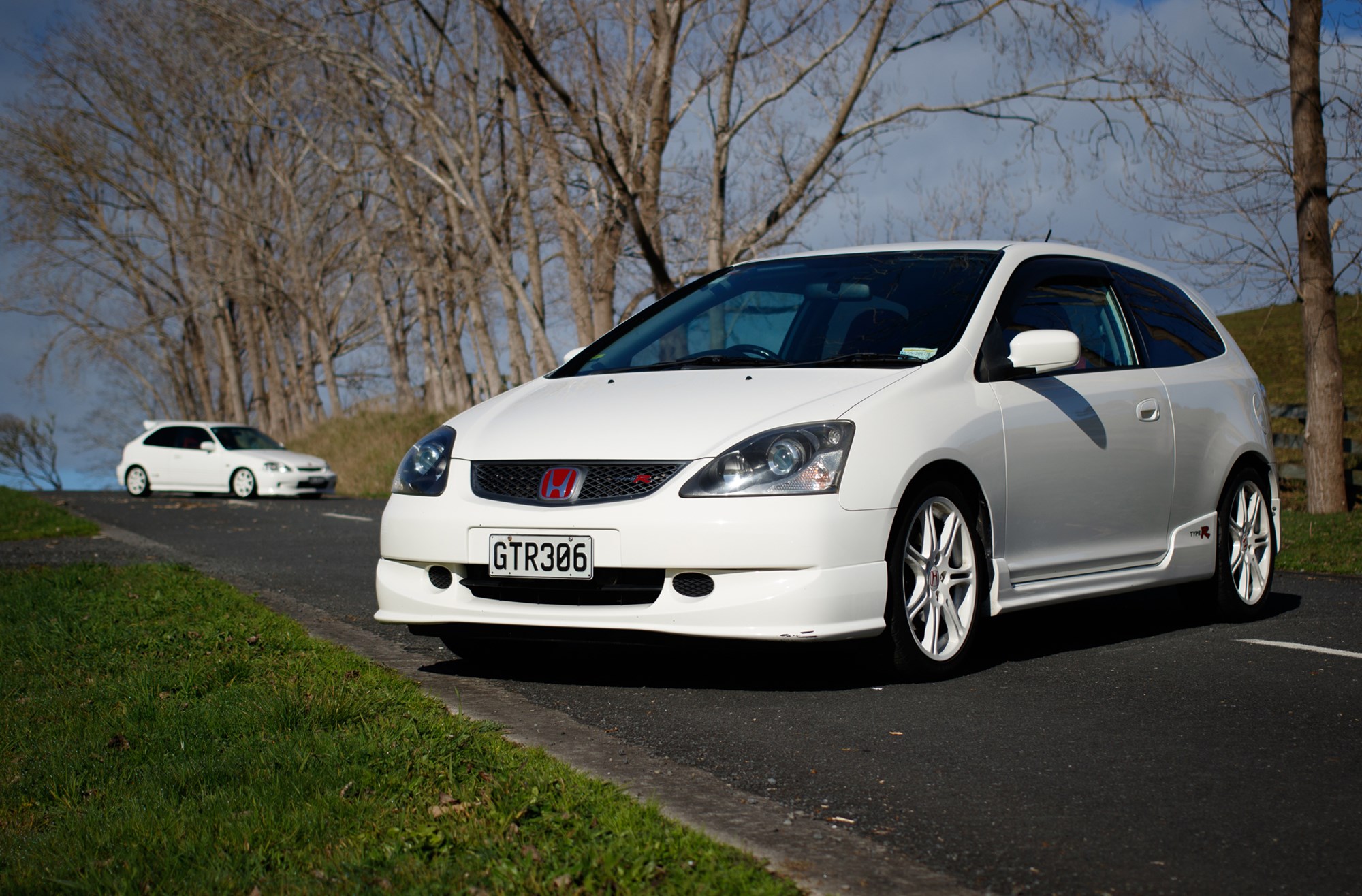
Photo / Simon Chapman
The EP3 suffers here as a victim of the Type R's success. Fundamentally, it's a car that ticks a whole heap of boxes. But in this company things are competitive.
It's got several quirky elements. Things like the dashboard-mounted gear shift and the cubic, slab-sided styling. But, at the same time, the driving experience is quite a conservative one. Some of this might have to do with our test car being a UK-based variant. Two general versions of EP3 were made; a UK one and a Japanese one. And the latter got most of the best toys; it had the quicker spec K20A engine, a helical limited slip diff, and a range of other mechanical alterations.
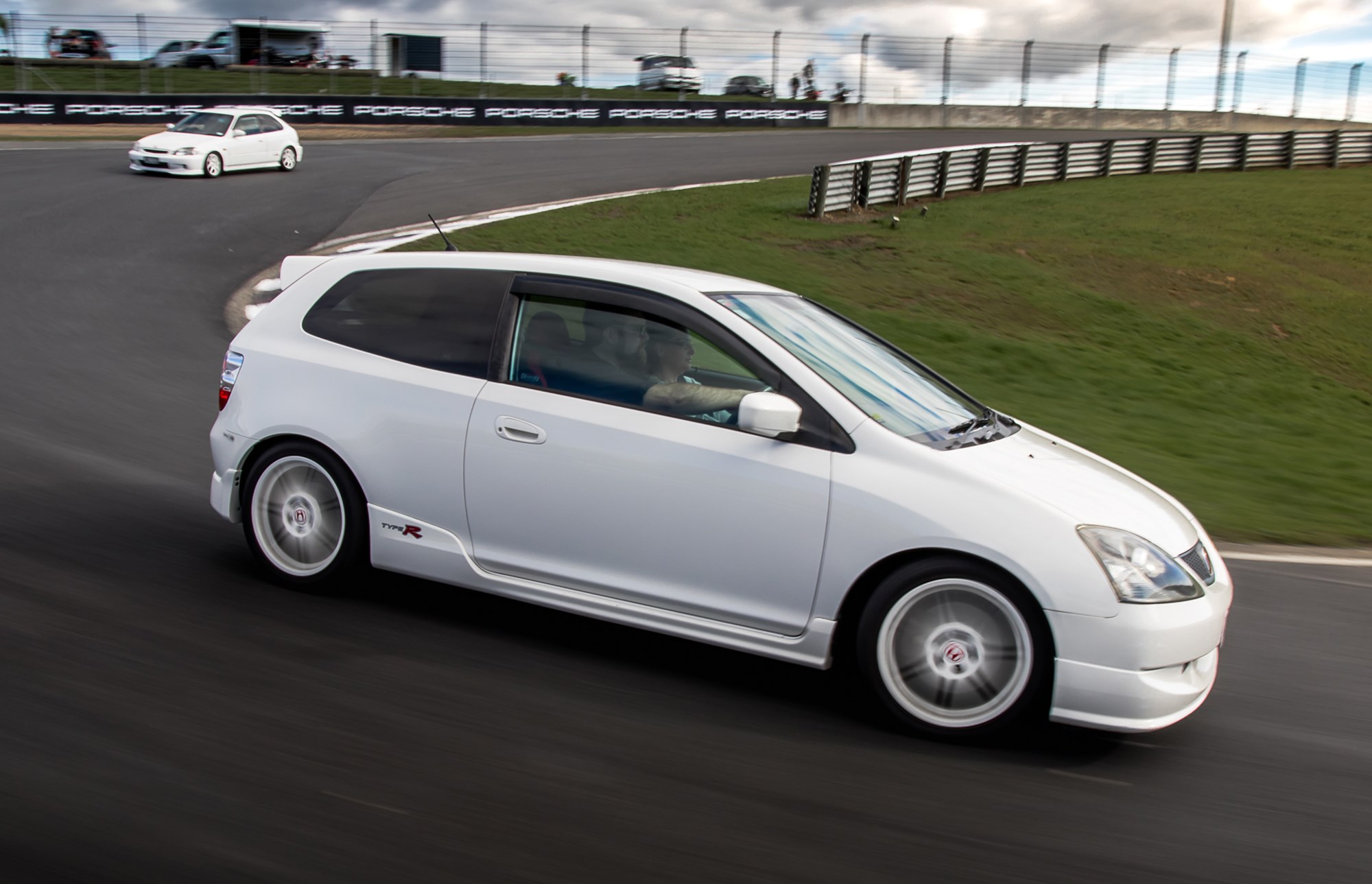
Photo / Richard Opie
Not that much of that was missed in my brief drive. You only need to give the throttle pedal a passing glance to get the engine to kick into life — a pleasure we're largely starved of these days in modern turbocharged performance cars. That weird gear-knob set-up is something you get used to quite quickly, and is actually quite handy when it comes to quick and snappy shifts since you don't need to move your hand far from the steering wheel to reach it and give it a pull.
The downsides came down to a lack of feel next to the older and newer variants. It also lacked a few horses down low in the rev range, making it that much more difficult to extract the most from it in our short drive. Early examples were also criticised for understeer issues, though that was rectified by the time this face-lift model was released.
Still, the EP3 is a great little car. And what's more, priced online in the ballpark of $10,000, they're a performance-car bargain these days; the best value buying of anything in this line-up.
4th: FK2 (2015–’17, fourth generation)
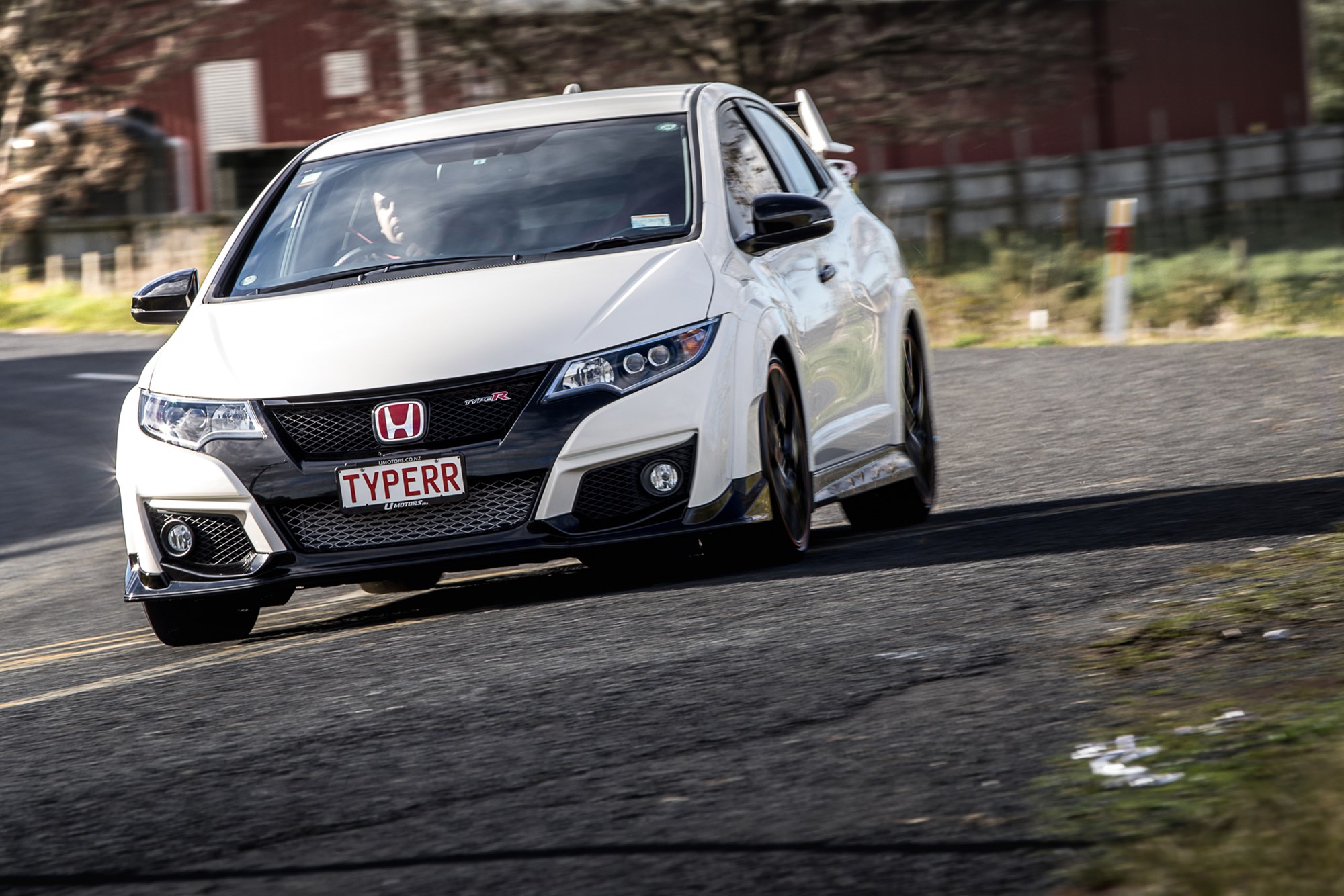
Photo / Richard Opie
It seems like just a few years ago that the FK2 was the shiny new-release Type R that everyone was fawning over ... because it was just a few years ago.
Launched in 2015, the FK2 represents the biggest generational shift for the Civic Type R. The implementation of Euro 5 emissions rules in 2011 effectively sealed the end of Honda's high-revving, naturally aspirated wonderfulness. This meant a change of tact was in order.
So, like many others, Honda turned to turbos. The FK2 was the result, with its revitalized K20C1 engine now pumping 228kW and 400Nm of torque through its front wheels.
This was the most capable Civic Type R Honda had made at the time, and Honda shouted this from the rooftops — a new front-wheel drive lap record at the Nurburgring being the jewel in the marketing crown.
But, they were still a car sold in limited quantities to limited places. Japan and the UK got it, as did a few lucky others, but the rest of us had to do without. This example came from Japan as an import, and is one of only a very small handful that call New Zealand home.
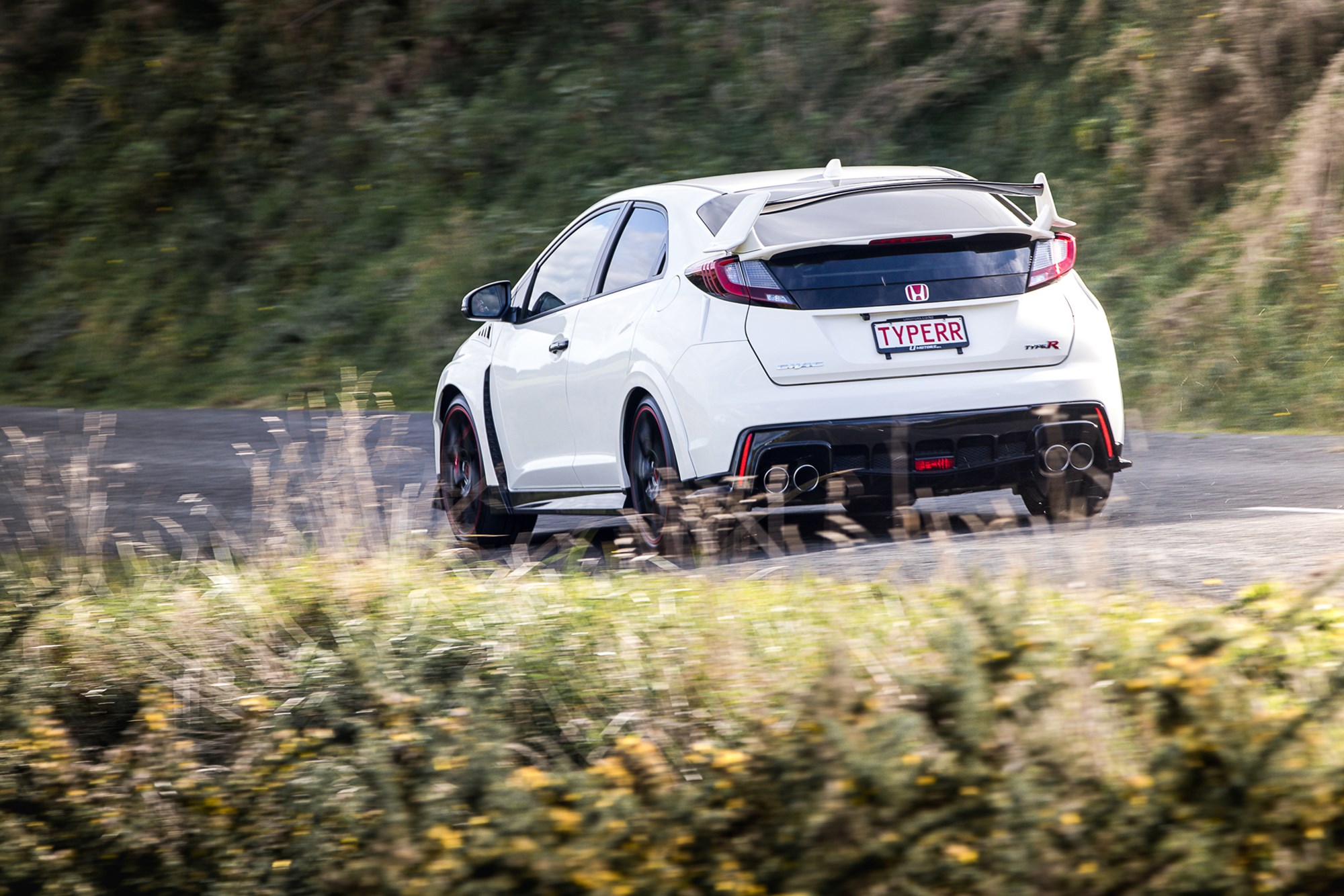
Photo / Richard Opie
The FK2's capability shines through when you're in the driver's very, very deep bucket seat. It feels like an extremely focused tool — constantly urging you to press the go pedal just a little bit harder. And when you do decide to give it a bit of grief, it's a car that rewards you with supreme pace and controlability.
The problem is that when you're not in the mood for full-throttle togue runs through a B road, the FK2 isn't very comfortable. The suspension is particularly rough, making this a difficult prospect as a daily car.
As well as that, I can't shake the idea that the FK2 was simply a dress rehearsal for the FK8. The two cars feel very similar when you're on the limit because they utilize a lot of the same parts, but the FK8 just feels better at ... everything. It's more savage when you want it and is endlessly easier to live with — a better all round package.
3rd: FK8 (2017, fifth generation)
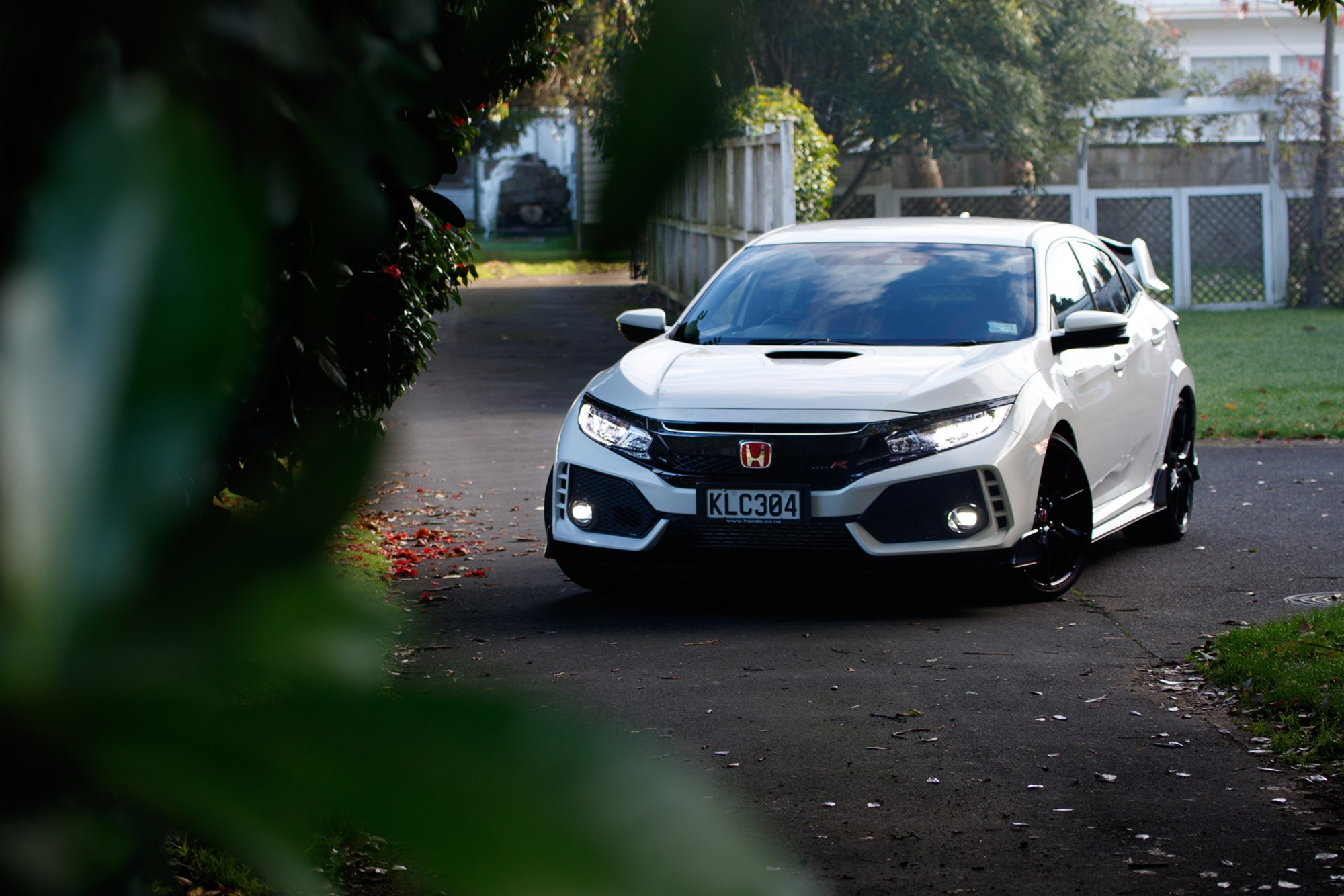
Photo / Simon Chapman
... and yet, not my favourite package.
Make no mistake, the FK8 is a deadly piece of weaponry. The speeds in which it can attack corners with poise defy physics, the way the engine smacks you in the face with its power, the wild and fully functional aero — all of it is so impressive.
It's a car that will demolish everything else on this list around a race track, but that's not the point.
In the company of its real-world rivals, the FK8 is one of the most logical and brutal machines. However, in the company of its Honda brethren, the FK8 sadly feels a bit synthetic. That K20 engine might be much more powerful and quick with its turbo, but it's also less charismatic, less emotional.
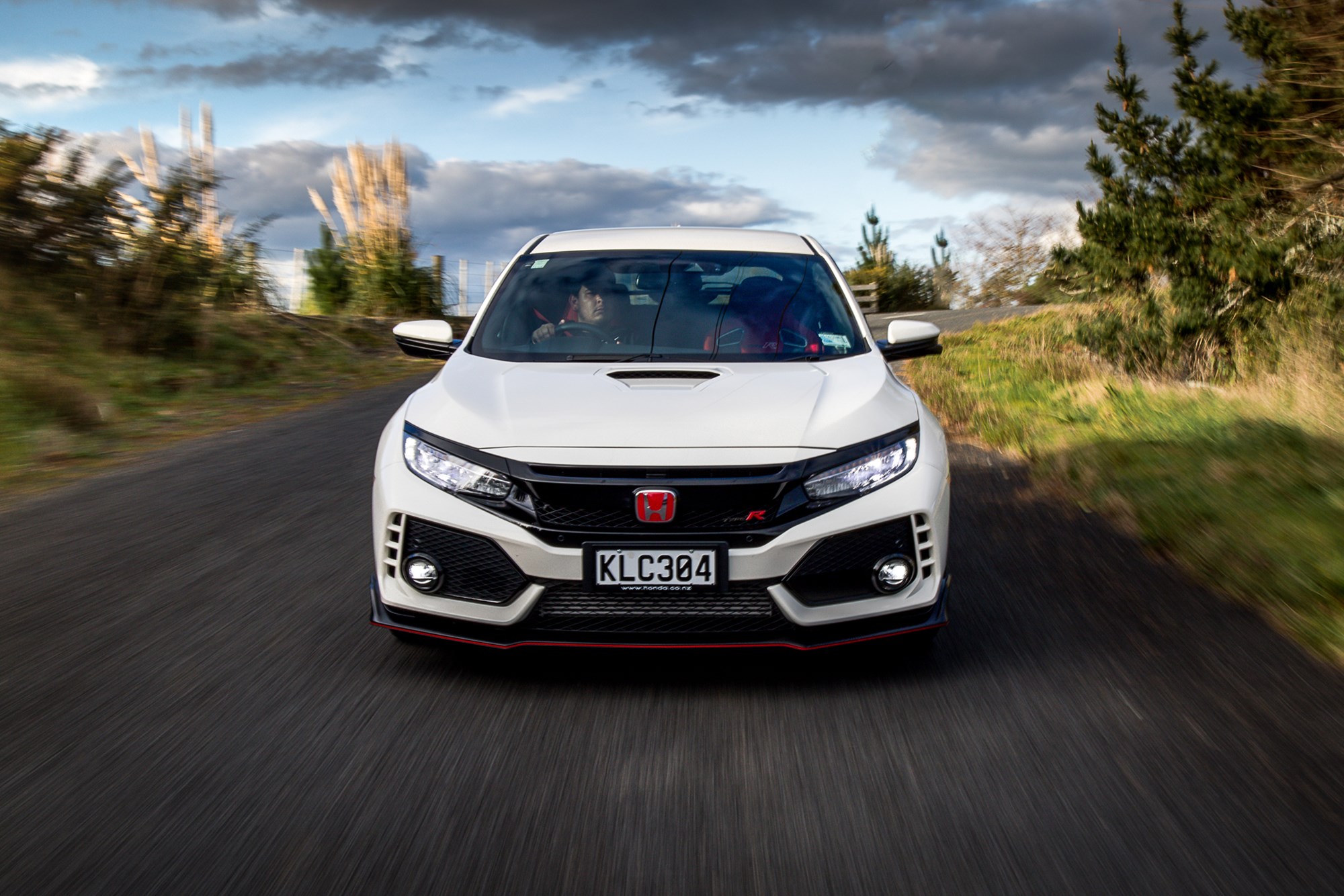
Tasks are ticked off as if they're formalities, and there's less of a sense of adventure here than in some of these other cars. No 8600rpm screams, no VTEC surge, and a very light sprinkling of turbo lag.
The other drawback is that, because the FK8 is basically a borderline sports car like most of the hot hatch segment these days, you need plenty of space in order to get even remotely close to its limit. It's so glued to the road with aero that you get little in the way of attitude from the chassis until you're making a complete mockery of the speed limit, and it's the same for that engine.
2nd: EK9 (1997–2000, first generation)
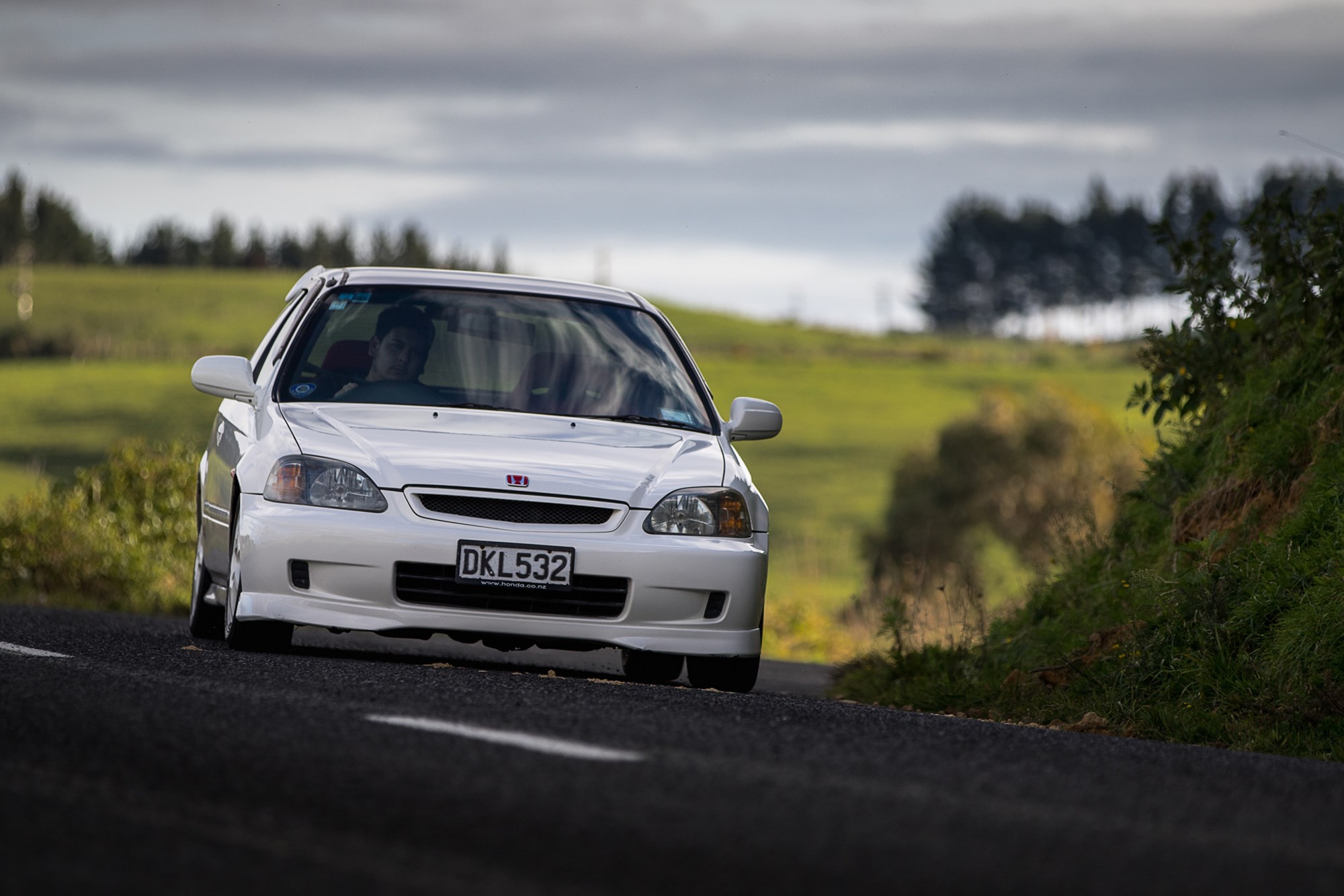
Photo / Richard Opie
Of all the Type Rs — including the NSXs and Integras — the EK9 is the one that has the biggest cult-status among fans. And, having driven it, the hype is more than justified.
This is a genuine, dyed in the wool, old-school hot hatch. It is dead simple, as light as a feather, and guaranteed to make anyone who hops into the driver's seat grin from ear to ear.
The EK9 shows its age a bit with a typical '90s driving position; steering wheel at your knees and a gearknob that you've got to reach through the floor to use. But, once you get around that, it's the most alive car here. The lightened and stiffened chassis feels ahead of its time, and is always keen to play around underneath you.
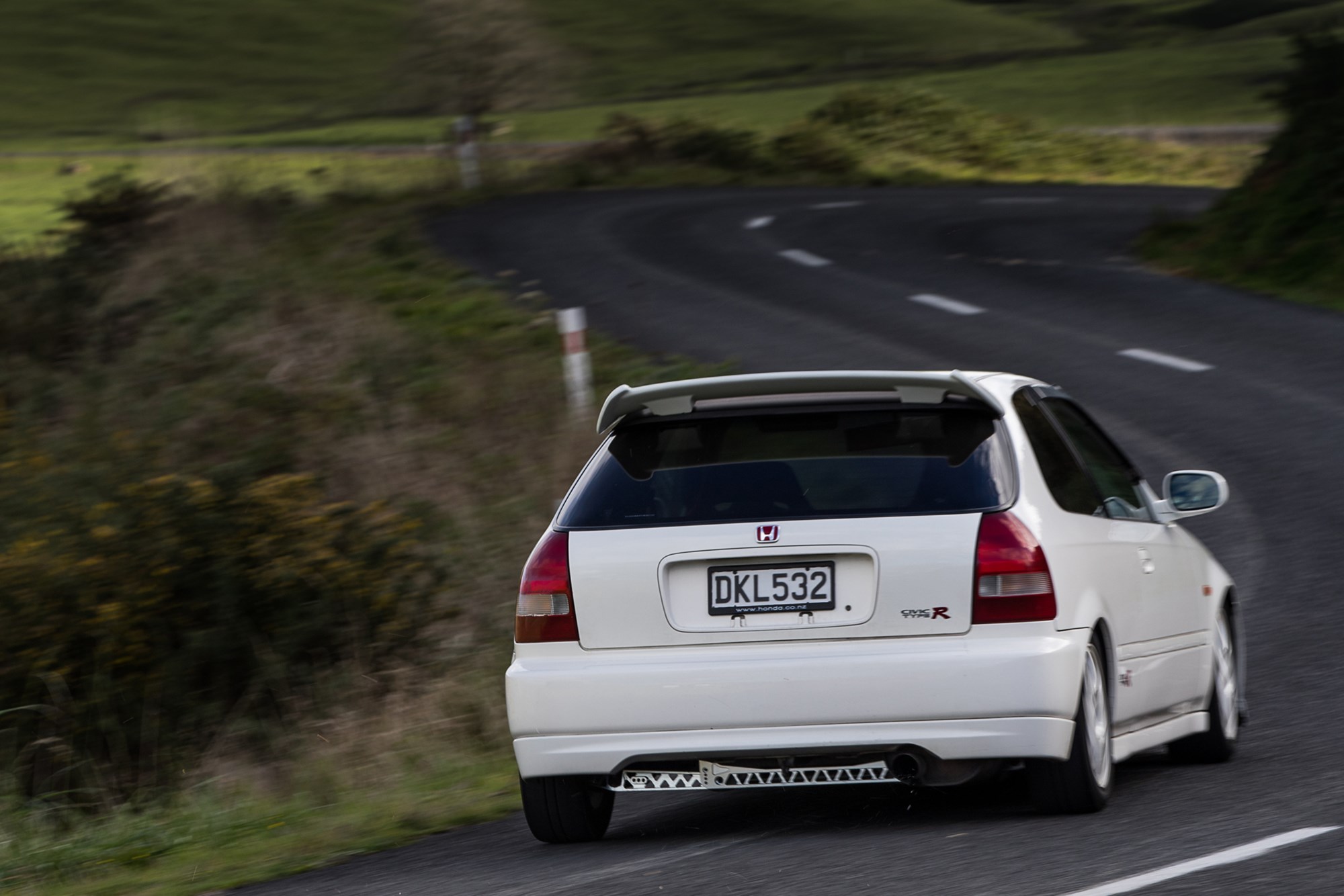
Photo / Richard Opie
It's also the only one not to use some kind of K20 engine. Under the bonnet is Honda's beloved B16B engine, giving off a raspier, more raw feeling than the smooth, refined, advanced K20. It's similar to what powered the first Integra Type Rs, and what a absolute peach it is. And, because it remains humble at 135kW, it means you can the car and genuinely approach the limit without fear of losing your license.
Admittedly, this car had some modifications throughout. The interior was stripped and the rear-end fettled, but finding stock untouched Civic Type Rs is needle-in-a-haystack stuff.
1st: FD2 (2006–’10, third generation)
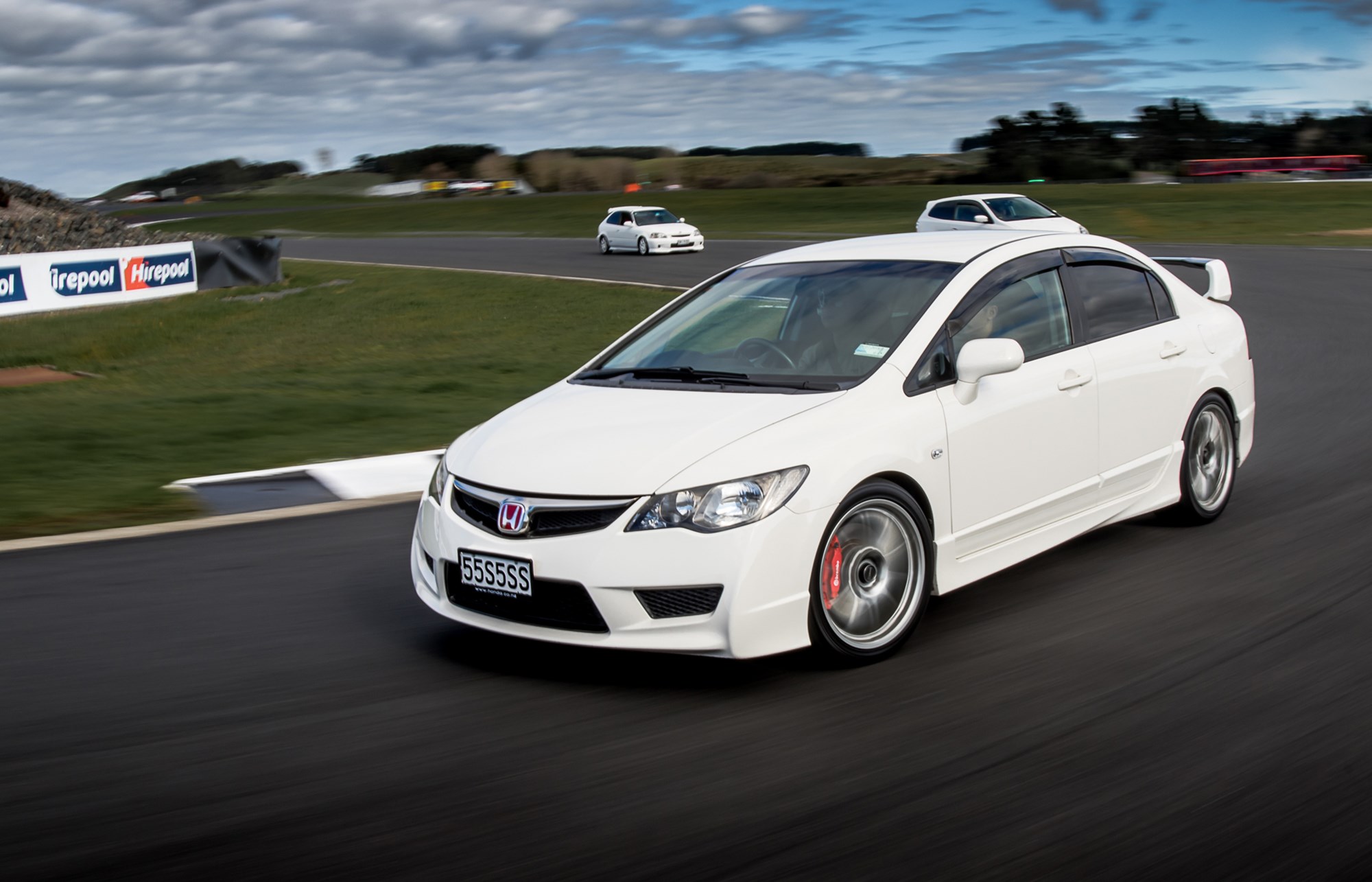
Photo / Richard Opie
What would you know; Honda's most boring and basic-looking Civic Type R is also their best. Well, I think so anyway.
In some ways the FD2 lives in the shadow of the FN2 — existing as this foreign, exotic Type R unicorn to those in Europe stuck with with their arguably inferior home-grown variant. It was the last in the line of Honda's naturally aspirated Type Rs, and (unlike the FN2) it was able to take all the things that made the NA cars great to suitable extremes.
To drive, it's tack sharp. The added four-door sedan length works in its favour, making it feel assured and planted at speed — though still fluid enough to have truckloads of fun. Next to the much newer FK2 and FK8, the FD2 still feels like a very accurate, and lethal tool.
It's the engine though that takes the cake. This is the ultimate final form of Honda's K20A engine. The silly 8,600rpm redline comes quicker than it's ever done before, and that traditional VTEC step at five and a half grand on the rev gauge is as intoxicating and addictive as it is in any other R.
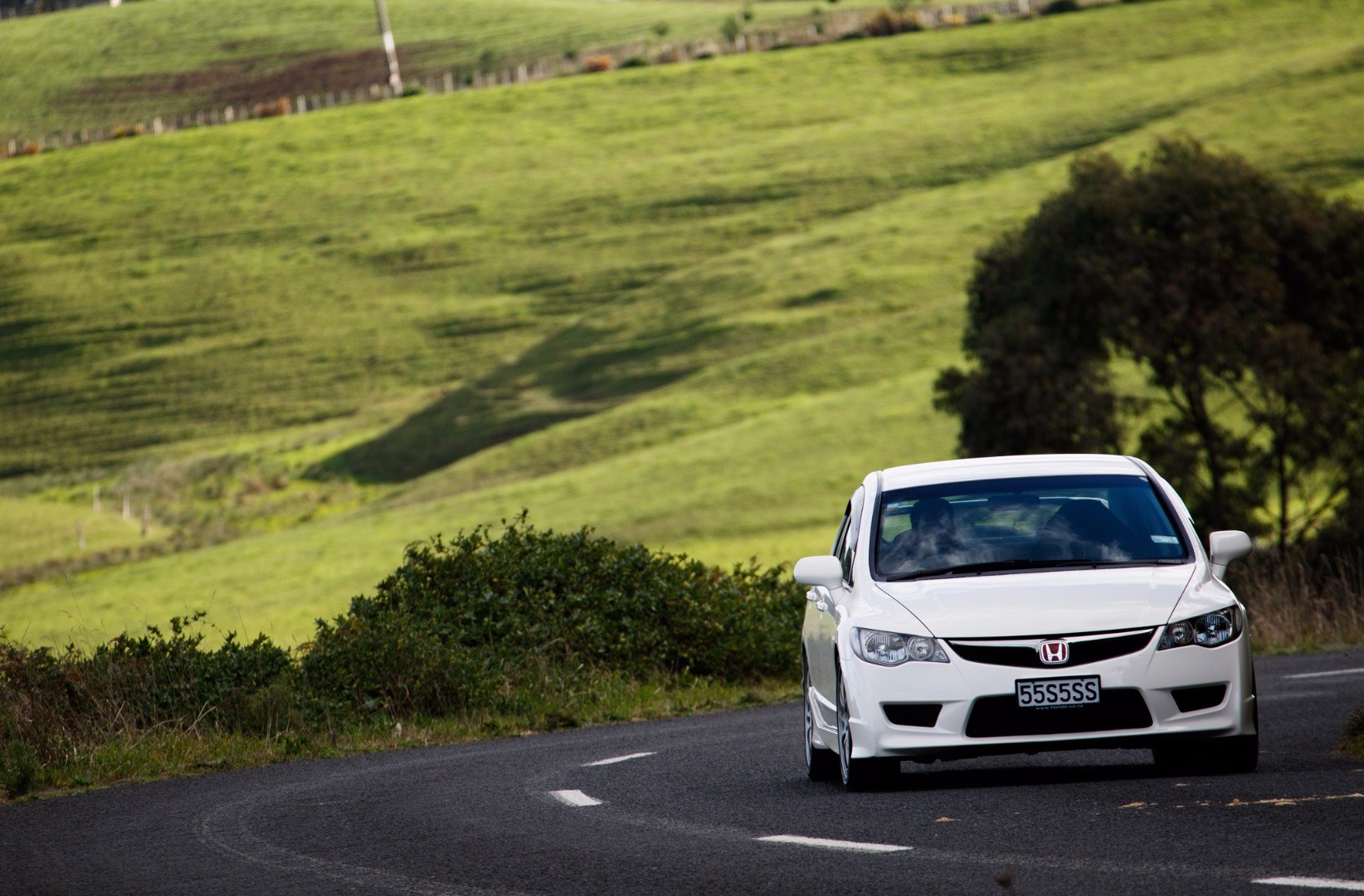
Photo / Simon Chapman
It's the over-engineering in the FD2 that helps it cross the line ahead of the EK9. As light as the EK9 is, Honda still thought inside the box for certain things. The doors, for example, feel like they weigh a ton.
Not so on the FD2. It looks unassuming enough, but underneath the team performed all sorts of trickery to lighten, stiffen, and smoothen the load. The doors all weigh nothing, a fully functional rear diffuser sits between the rear wheels — the whole car just feels well thought out. This is proven in the numbers, which show that it weighs just 1.8kg more than the Integra Type R DC5 two-door sports car that Honda built just a few years earlier, and somehow also being 50 per cent stiffer.
And it does all this while looking a bit like a rental car. I like that.
















